If you’re a first-time plant parent, this post is for you. This beginner’s guide for indoor houseplants will teach you how to care for indoor plants and give you a list of the best houseplants for beginners! You’ll be able to develop your green thumb and fill your home with happy plant babies!
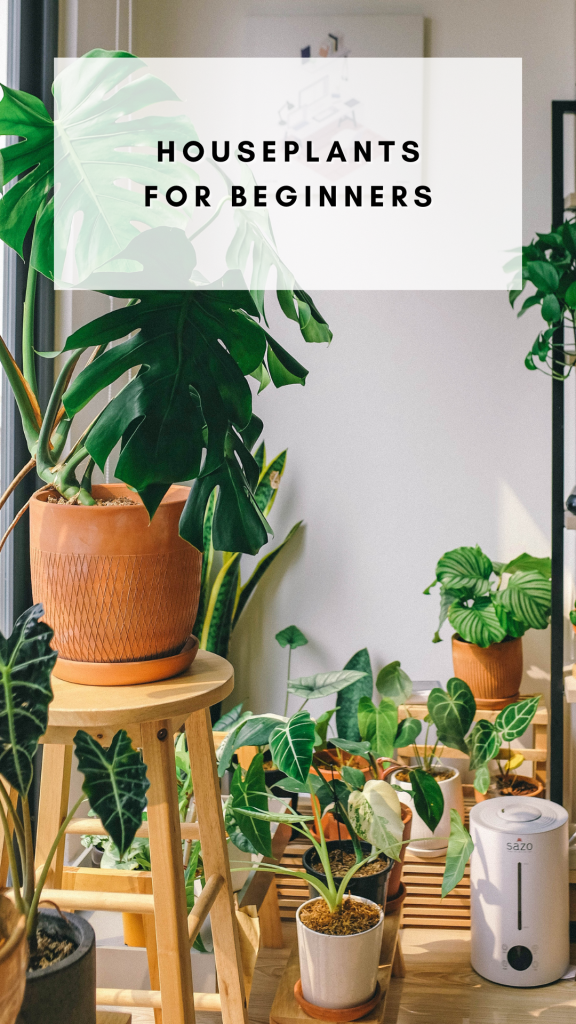
Indoor houseplants are one of my favorite ways to decorate! They add so much texture and life to a space, which makes them the perfect compliment to a minimalist home style.
It’s also super rewarding to watch them grow. There’s nothing quite like seeing a new baby leaf on a plant you’ve been caring for.
But maybe you’ve brought home a succulent or two and watched it whither away despite your best efforts. Don’t worry, there is still hope. We can turn your black thumb green, you just need to know the basics of plant care.
The easiest houseplants for beginners:
Some of the most popular houseplants aren’t all that easy to care for so buying the right houseplants for beginners can make all the difference. I have an entire list of the best indoor plants for beginners, but these are my 4 favorite low-maintenance plants I recommend to everyone.
- Snake plant – I love snake plants so much I actually have four of them. They’re a super easy to care for, low maintenance plant and don’t require a ton of light or much water.
Want a plant you can ignore for weeks at a time? This is the right plant for you! P.S. This faux snake plant is the most convincing faux plant I’ve found. It’s happily lived in several places around my home over the years. - Golden Pothos – I have two pothos and they’re perfect for open shelving or anywhere you want a viney plant with classic heart-shaped leaves. And they’re the only plants I’ve been able to keep alive on the opposite side of a room from a window.
Pothos are able to survive in low-light conditions which makes them a fan favorite of new plant parents and one of the easiest plants to keep alive. - Aloe vera – these can get huge! This is another good option for plant parents who forget to water regularly, since they require less water than many other house plants.
- Rubber plant – Super easy to grow and I would recommend this one to any beginner! I have several of these and they are a great houseplant that packs a big punch but doesn’t require a lot of effort to keep alive.
PS All of those are linked to amazon. It seems weird to order plants online but I’ve ordered from amazon and etsy with no problem!
General Care Tips for Indoor Houseplants for Beginners
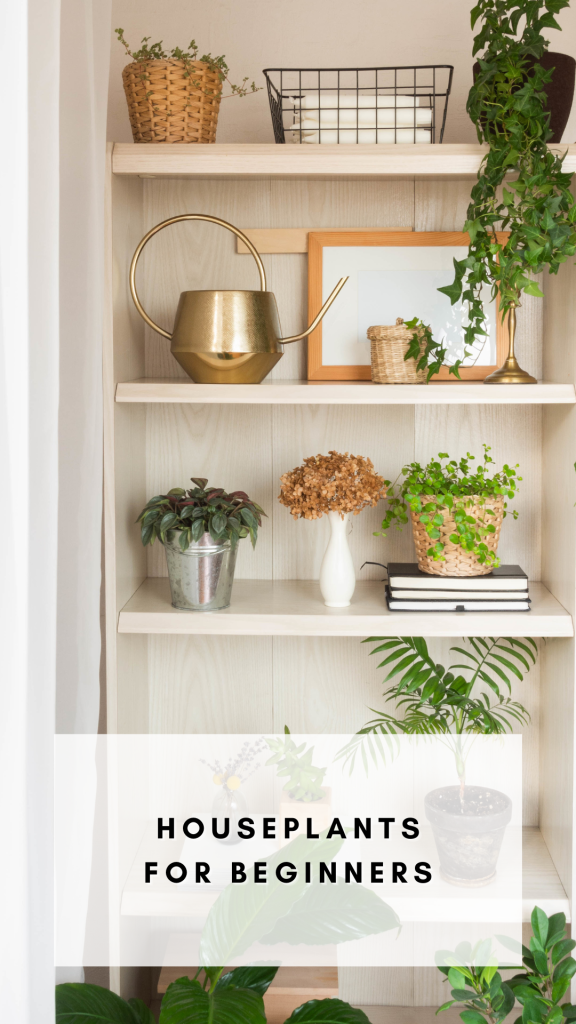
In order to keep your indoor plants alive, you need to know the basics of how to care for houseplants…and well, every plant. The 3 things every plant needs to survive are:
- Sun
- Water
- Food
The reason you may have had issues keeping your houseplants alive is because the balance of these three things was off in some way.
So let’s dig into each subject so you have a better idea of how they work together. I know they seem straight forward enough, but it’s so easy to have too much of one or not enough of the other if you don’t understand the balance.
How much sunlight do my indoor house plants need?
You already know sun is important for your plant. But determining how much sun it needs or exactly where to place a plant in your home is the tricky part.
Typically, plants are classified as high light (full sun), medium light (bright indirect sunlight), or low light plants.
The most important thing to know is the amount of sunlight a plant can absorb greatly decreases with every foot you move it away from the window. So a low light plant might actually need to be closer to a window than you would think.
Another thing that’s easy to overlook is that not all windows are created equal. If the window is shaded from the outside, your plant won’t be getting full sunlight/bright light in that spot.
So I like to think of it all like this:
- High sun plants should live in a bright spot directly in an unshaded window
- Medium sun plants will be happiest in a shaded window or a spot that receives direct sunlight from the window. This would be considered bright indirect light.
- Low light plants can be happy in shaded areas of your home, but need to be in rooms that receive some amount of natural light.
One last note on light is that low light indoor plants still need to be near a light source. They won’t thrive in a dark corner or a room with no windows. A pothos can thrive in low light conditions but they do still need some amount of sun.
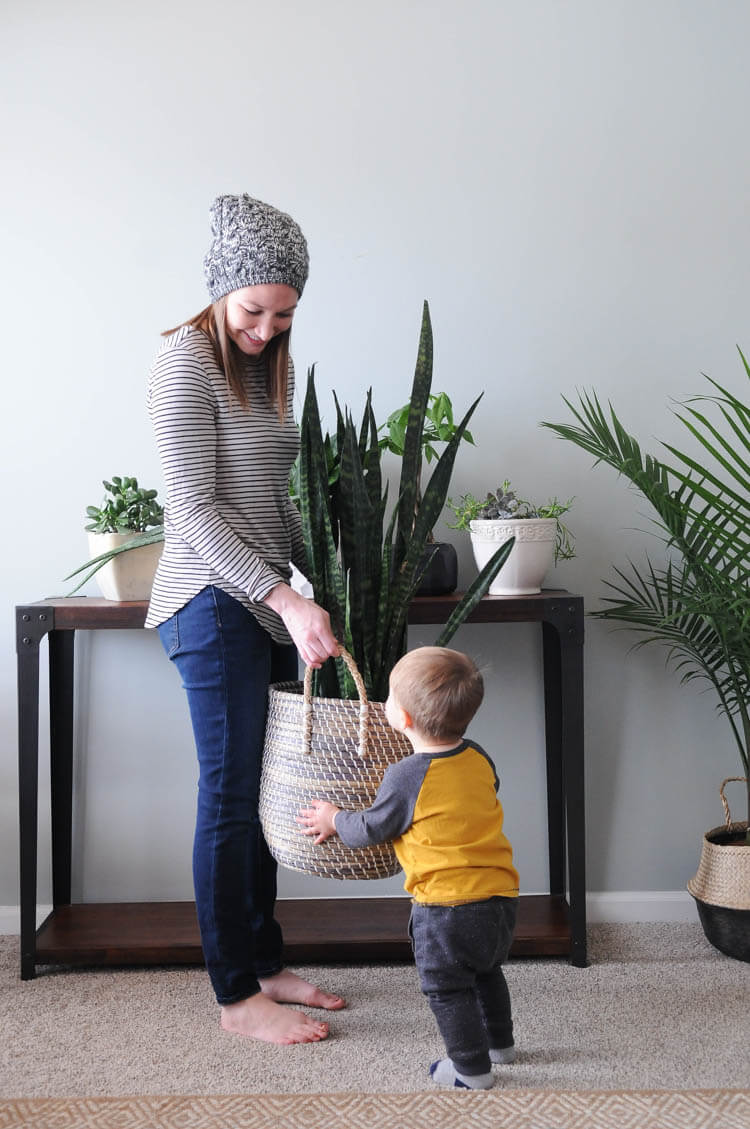
How often should I water my house plant?
One of the biggest mistakes I see people make with their first plant is when it comes to watering. I killed the first few plants I brought home because I didn’t understand that all the basics of taking care of a plant depend on one another.
Before I learned about the relationship between sun and water I assumed any time a plant wasn’t doing well it needed more water. Consequently, I drowned most of my early plants.
The amount of water your plant needs depends on the type of soil environment the plant prefers and the amount of sunlight it’s exposed to.
Some plants prefer dry soil, some prefer mostly dry soil and some prefer moist soil.
I have streamlined most of my plants onto a weekly, biweekly and monthly watering schedule based on their preferences.
If your plant prefers dry soil, you’ll need to wait for the soil to dry out completely. These types of plants will probably only need watered once or twice a month.
If your plant is absorbing more sunlight, the soil will dry out sooner and you’ll need to water it more. Because of this, most plants need watered more often in the summer when there are more hours of daylight.
Indoor house plants that prefer mostly dry soil need to be watered when the top inch or so of the soil has dried out. Plants that prefer moist soil should be watered more regularly.
It’s normal to need to tweak the amount of water you provide as you get to know your plants better. Usually the leaves can point you in the right direction and you can adjust as you go. Typically if the leaves turn brown and start to shrivel up, your plant needs more water. If they turn yellow, the plant probably needs less.
Most plants also need a decent way for the water to drain so their roots don’t rot. I really like putting my pots in baskets, so I use these little plastic saucers. For the ones I’ve replanted in pots, I put rocks in the bottom to allow for some drainage.
I got so many questions about how to plant a plant in a basket, I made a fun little video about it!
Example plant watering schedule:
- Snake plant: Water every 2-4 weeks
- Jade plant/ Aloe plant (or other succulents): Water every 2 weeks
- Pothos: Water every 10-14 days
- Fiddle Leaf Fig: water every 10-14 days
Does my indoor plant need plant food?
Another way to keep your houseplants healthy is to ensure they have the right kind of soil and are planted in a pot with good drainage. Different plants prefer different soil, usually based on the amount of water the soil holds.
Potting soil also comes filled with the nutrients your plant needs. However, over time your plant absorbs these nutrients and watering washes some of them away. You’ll either need to fertilize your plants or repot them with fresh soil regularly. Repotting every year or two is sufficient.
Most people only recommend using fertilizer once or twice a month during the summer. Those are the months plants are in a natural growth phase.
I recently started using a fertilizer from my local nursery that my plants seem to love. You might try your local nursery to see what they have available or recommend.
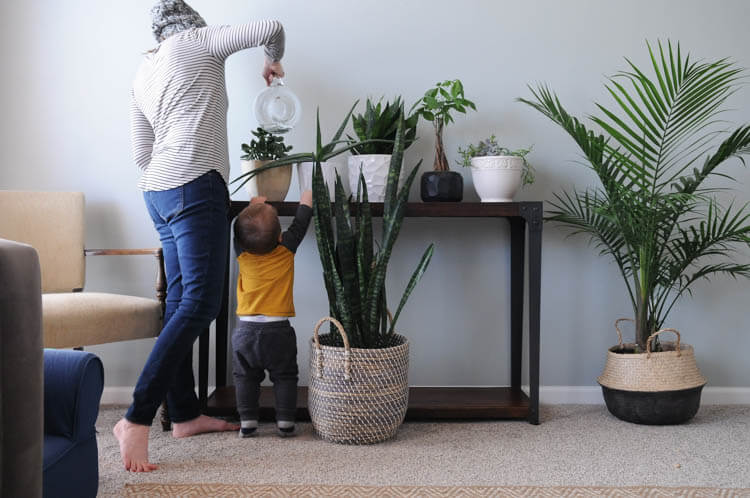
Other things to know about plant care:
- Indoor house plants can go into shock when they’re moved into a new environment. So when you bring a new plant home, try not to move it around too much. Leave the plant in one spot for at least a month. (Unless you find the light conditions are not absolutely not working out). This way it can adapt to the temperature, humidity and other unique factors of its new home.
- One way to determine how to keep your indoor plant happy is to research where it grows naturally. Then try to mimmic those conditions in your own home. For example, desert plants go a long time with no water and then receive occasional downpours. So generously water those plants on their watering days.
- I like to plant full sun plants like succulents outside during the summer months before moving them in. This way they get plenty of sun and establish a good root system before I convert them to indoor house plants. I’ve had great luck keeping succulents inside as houseplants, but they’re not as carefree as some people think.
- If you take your house plants outside in the summer, gradually expose them to the sun. The leaves can get sunburnt from sudden sun exposure.
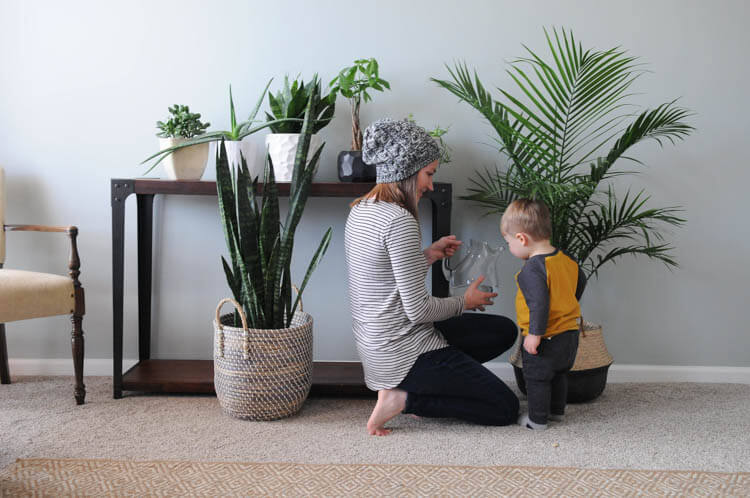
Alright, there ya have it, a complete guide about houseplants for beginners! Feel free to drop any extra advice you have for houseplants in the comments.
If you need help staying on a watering schedule for your house plants, download this free houseplant watering guide!
If you liked this post about houseplants for beginners, pin it for later:
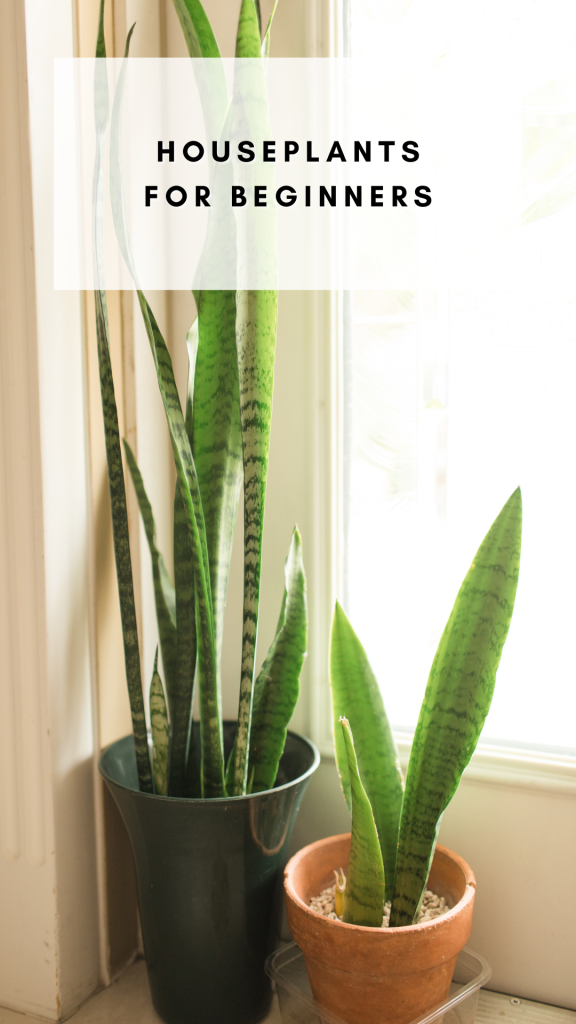


10 Hanging Plants To Add Style To Your Home - Green Garden Cottage
Thursday 28th of December 2023
[…] is one of the easiest plants to grow indoors and is an excellent option for beginner plant parents. They have cascading heart-shaped leaves that multiply, even in low-light conditions, making them a […]
10 Hanging Plants To Add Style And Texture To Your Home - Anika's DIY Life
Tuesday 19th of December 2023
[…] is one of the easiest plants to grow indoors and is an excellent option for beginner plant parents. They have cascading heart-shaped leaves that multiply, even in low-light conditions, making them a […]
10 Hanging Plants To Add Style and Texture to Your Home - Glow Diaries
Thursday 14th of December 2023
[…] Aureum): Pothos is one of the easiest plants to grow indoors and is an excellent option for beginner plant parents. They have cascading heart-shaped leaves that multiply, even in low-light conditions, making them a […]
10 Hanging Plants To Add Style and Texture to Your Home - ritual & reverie
Thursday 14th of December 2023
[…] Aureum): Pothos is one of the easiest plants to grow indoors and is an excellent option for beginner plant parents. They have cascading heart-shaped leaves that multiply, even in low-light conditions, making them a […]
10 Hanging Plants To Add Style and Texture to Your Home
Thursday 7th of December 2023
[…] aureum): Pothos is one of the easiest plants to grow indoors and is an excellent option for beginner plant parents. They have cascading heart-shaped leaves that multiply, even in low-light conditions, making them a […]